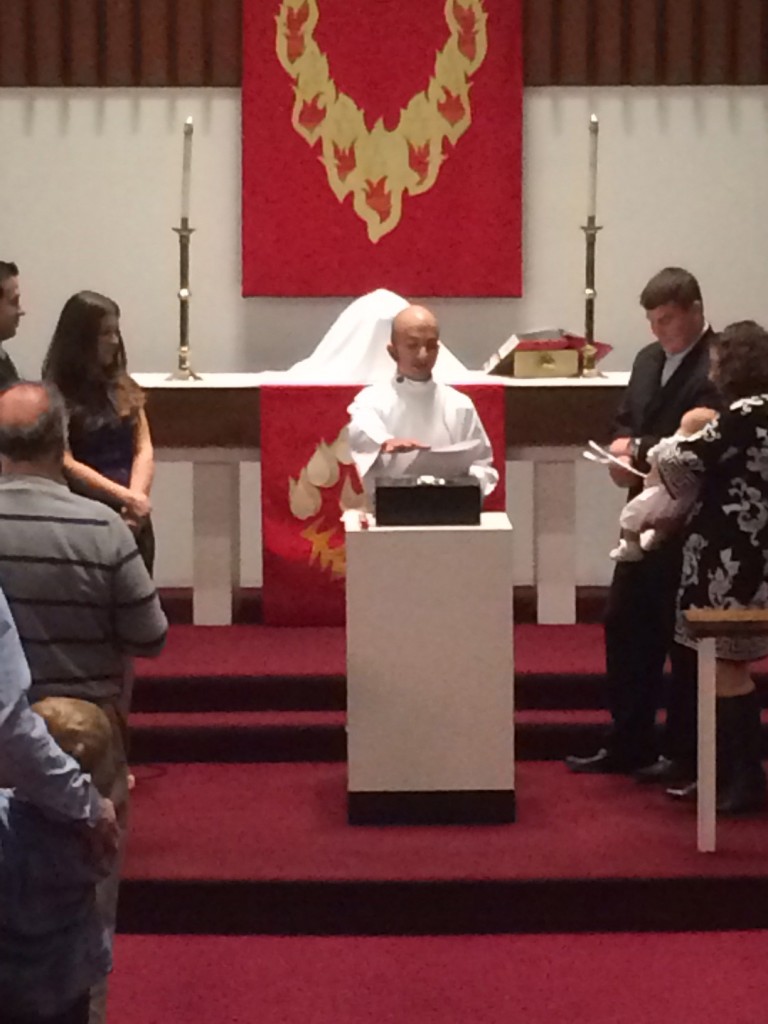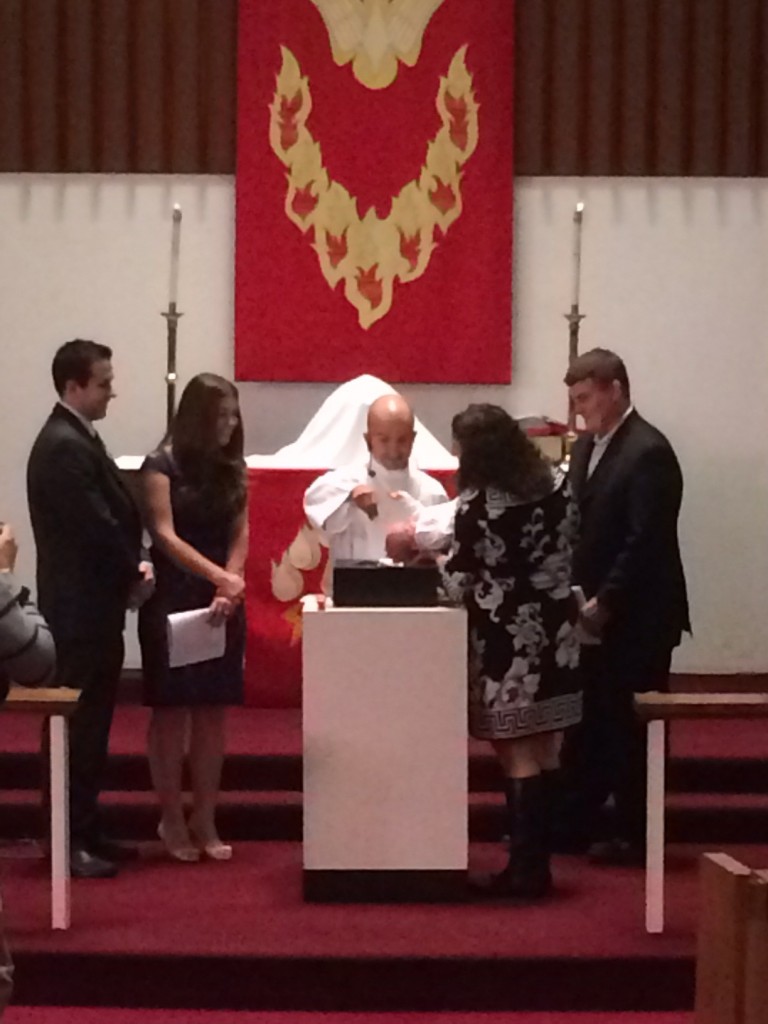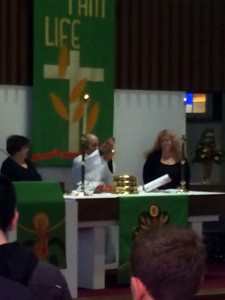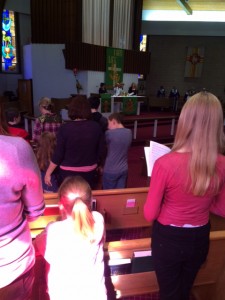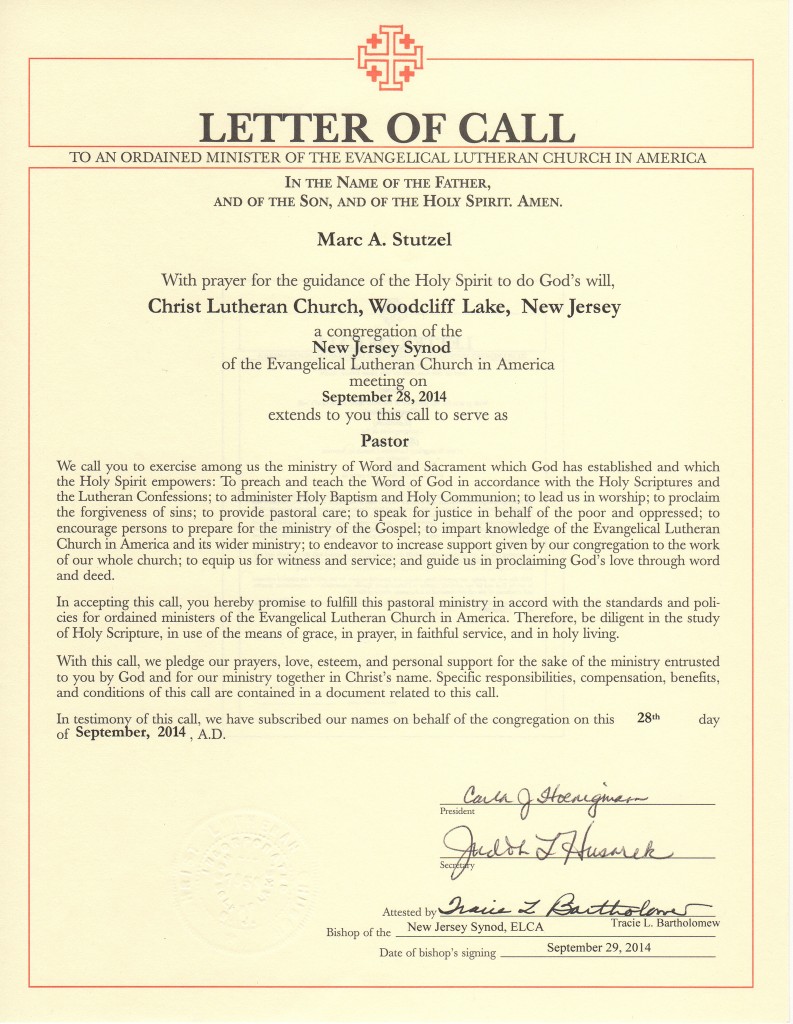‘Then the kingdom of heaven will be like this. Ten bridesmaids took their lamps and went to meet the bridegroom. Five of them were foolish, and five were wise. When the foolish took their lamps, they took no oil with them; but the wise took flasks of oil with their lamps. As the bridegroom was delayed, all of them became drowsy and slept. But at midnight there was a shout, “Look! Here is the bridegroom! Come out to meet him.” Then all those bridesmaids got up and trimmed their lamps. The foolish said to the wise, “Give us some of your oil, for our lamps are going out.” But the wise replied, “No! there will not be enough for you and for us; you had better go to the dealers and buy some for yourselves.” And while they went to buy it, the bridegroom came, and those who were ready went with him into the wedding banquet; and the door was shut. Later the other bridesmaids came also, saying, “Lord, lord, open to us.” But he replied, “Truly I tell you, I do not know you.” Keep awake therefore, for you know neither the day nor the hour.
Matthew 25:1-13
My sermon from 22nd Sunday After Pentecost (November 9, 2014) on Matthew 25:1-13. Listen to the recording at the bottom of the page or read my manuscript below.
****************************
“Keep awake….” that’s that start of our last line from Matthew today. “Keep awake – for you know neither the day or the hour.”
I don’t know about you, but whenever someone tells me to keep awake, to be alert, to be ready, I get a little anxious. I get a little concerned that maybe I’m not ready, maybe I’m not prepared for what’s to come. Even though I’m no longer a student in school, I still suffer from those nightmares, you know the ones, where we’re in highschool and it’s finals week and we walk into class for a test we’re totally not prepared for. Or, sometimes, I find myself having to take a final for a class I didn’t even know I was registered for until that last day. Every time I have these nightmares, I wake up to find myself a little sweaty, my heart kinda pounding, and the rest of the day just feels incredibly unsettled. So when I hear these words from Jesus about being ready – about being alert – I have flashbacks to those nightmares – to that anxiety – and I wonder, in this parable, just what can I stand on?
Because when we dig into the parable, a lot of odd things pop out. We have ten bridesmaids who are sent out to meet a bridegroom. They all have lamps and they’re suppose to meet this guy and escort him back to the party. So they all get to the prearranged meeting spot and – … – the bridegroom is not there. So these ten bridesmaids wait…and wait…and wait. They wait so long, they all just fall asleep.
But then, in the middle of the night, they hear a shout that the bridegroom is on his way. They wake up, get ready to escort this guy to the party, when five of them notice that they don’t have enough oil to keep their lamps lit. They ask to borrow some oil from the others but they’re refused. So these five bridesmaids without oil leave to go buy some and while they’re gone, the bridegroom arrives and he and the five remaining bridesmaids head to the party. The five without oil buy what they need and head back to the party, only to discover that the bridegroom not only left them, he’ll no longer let them in. They’re locked outside the party forever.
So, what gets me about all of this is that there isn’t anyone in this parable that I can really get behind. First, we have a bridegroom who is late to his own party and he doesn’t even apologize for being late. His lateness is the reason the oil runs low for some and we have no idea why he’s late. Second, when the bridesmaids are getting ready, the wise – those who brought extra oil – they not only refuse to share, they convince the other five to leave their meeting place and go out to buy more oil. When they leave, the bridegroom arrives and instead of waiting for the other bridesmaids to return – which might be the nice thing to do – they all just take off. Even the wise bridesmaids don’t tell the bridegroom to wait – they just all get up and go. There are plenty of opportunities in this story for a little patience, a little forgiveness, a little thoughtfulness – but when I share this story with my toddler, who do I want him to be like? Like the ones who don’t have enough oil, or the ones who won’t share, or the bridegroom who is late and doesn’t seem to wait? All we seem to get, really, is one set of bridesmaids labeled wise, another set labeled foolish, and we’re left wondering where we are in all of this. Are we wise? Are we foolish? When we head to God’s great party, are we going to be let in or are we gonna be stuck on the outside, knocking on that door forever?
Now, this parable is a story – it moves – and it brings us somewhere. But these last words from Jesus – “keep awake…” – they occur after the parable ends. They are, in one verse, Jesus’ exposition of what this parable means. We’re left at the end with a locked door, a party on one side, and a group of bridesmaids talking to the bridegroom on the other. Now, we can focus on that ending – on that locked door – on what that party on the otherwise is like – but maybe Jesus’ words provide us with an opportunity to take a step back and see this parable from another angle.
Those words – keep awake – now, there’s only one part of the parable that has anything doing with wakefulness or sleepiness. And it occurs before the bridegroom is met, before the oil runs out, before the bridesmaids don’t share or send each other away. Before the real nastiness of the parable begins, we find our ten bridesmaids all gathered together, at the expected place – waiting and waiting and waiting. Before their actions can define them as either wise or as foolish, they are all standing there together, waiting for their bridegroom to come – with their lamps ready.
And then they fall asleep.
It’s easy, I find, in our faith lives, to be asleep. Wise, or foolish, there are moments we all share when the experiences of our lives devour our faith. On top of the moments of pain and loss that we experience, we also have those little moments – those everyday moments – that cause our spirituality to be put on the backburner. We’ve all got too much to do and not enough time to do it. Rushing to get our kids to school, to the next activity, to get ourselves to the office, or the next job, or just to the next project or problem to solve – it’s easy to just blow past our faith life – to be, in a sense, too busy for faith. And as that next project, next responsibility, next priority, takes our focus, time, and energy, our faith life slowly goes dormant. Our prayers to God become shorter. Our time in worship becomes less. Our stories to one another about our experiences with God become quiet. We find ourselves going full speed forward, wise or foolish, old or young, onto the next thing and letting our time with God fall by the wayside.
It’s hard to think of ourselves as needing to be awoken when we’re so busy, we never have time to sleep – but Jesus’ words – to keep awake – isn’t about being roused from our slumber but to be mindful that we have already been awoken. Like those bridesmaids, we have been invited out, to go meet the bridegroom and, in our baptism, to remember that we have already been claimed by God. We have already been gifted the beginning of faith. We’ve already been given the spark needed to stay awake.
And as beloved children of God, we’re called to a state of active wakefulness. It’s a call to pay attention to God, to pay attention to ourselves, to pay attention that our wholeness rests not in how many items we get off our bucket list or how many unique check-ins we make on Facebook that makes our friends jealous – Jesus’ words are a reminder that our faith life, our life with God, needs engagement, needs focus, needs time. When we focus too much on the the end of the parable, on that locked door, we forgot about that middle part – that waiting. We skip over the time in the parable and just rush to get to that final event – to that next project – we end up doing what we always do – rushing through the parable rather than living with it. Jesus’ words are a reminder that our life as beloved children of God is less about the completing of tasks or checks on a checklist – but more about living into God’s activity, God’s future, and as one commentator said, more about actively living into the expectation that God will make all things new.
The Christian life is a waiting life. Stirred by God’s grace, we are pointed to the next big thing, to the promise that God will, and does, make all things new. But we’re not called to a passive waiting or a rushed waiting either – no, we’re called to be awake – to be like those bridesmaids while they wait – gathered with each other before the bridegroom, before God, with our lamps lit, ready to be fed by God and ready to respond to God’s call to gather into the world, into the darkness, into places where we might be incredibly uncomfortable – and to carry Christ’s light of love, mercy, care, and forgiveness.
We are called to be Christ’s light in the world – a light that burns brightly – but one that is constantly fueled, charged, and ready to engage with whoever and whatever comes our way. That doesn’t mean that we’ll always be faithful or that we’ll never doubt or that we’ll never forget to say our daily prayers – but it does mean that we don’t let apathy or habit or distance from our faith keep us from seeing what God is doing in our lives. When we open the bible and read, we are trusting in God’s wakefulness. When we share our faith life with our children and pass our faith down to them, we are participating in that active expectation that God isn’t done with us yet. Forgiving sins, sharing in the body and blood of Christ, baptizing children and adults into the church – we are resting firmly on that hope – on that call from Jesus to be awake – to be prepared – to keep making time for our faith because God continues to make time for us. So, wise or foolish, with oil or without, and even if we feel like we’re heading into our highschool classroom to take a test we never studied for or never even knew we had – we go awake. We go in hope. We go in faith that God is making all things new. “Keep Awake” – Jesus says – because God isn’t done with us yet.
Amen.
Podcast: Play in new window | Download

